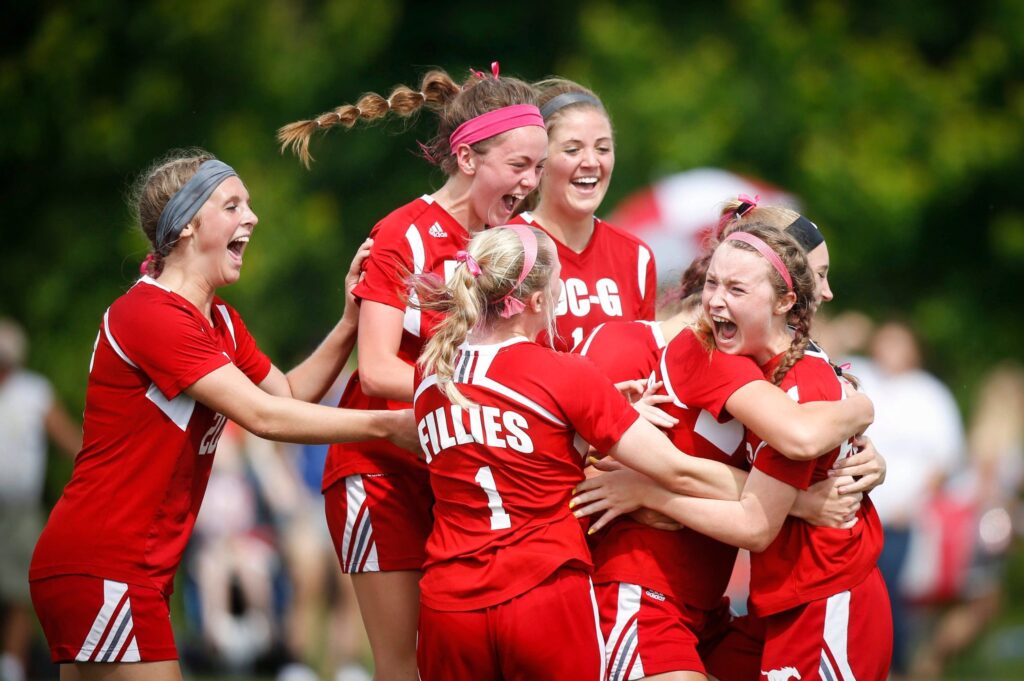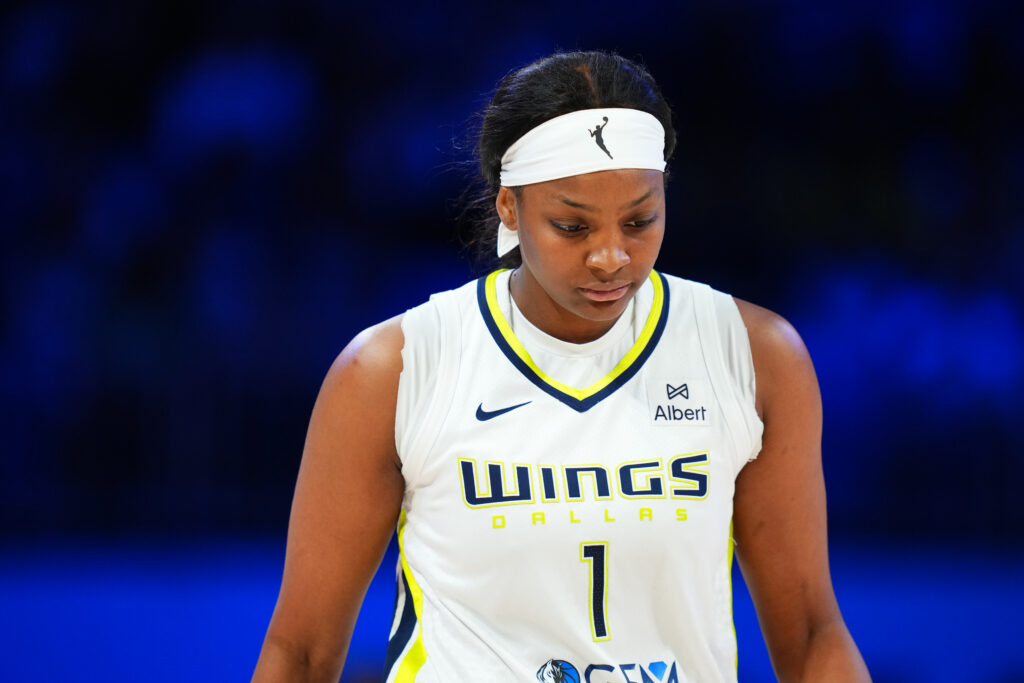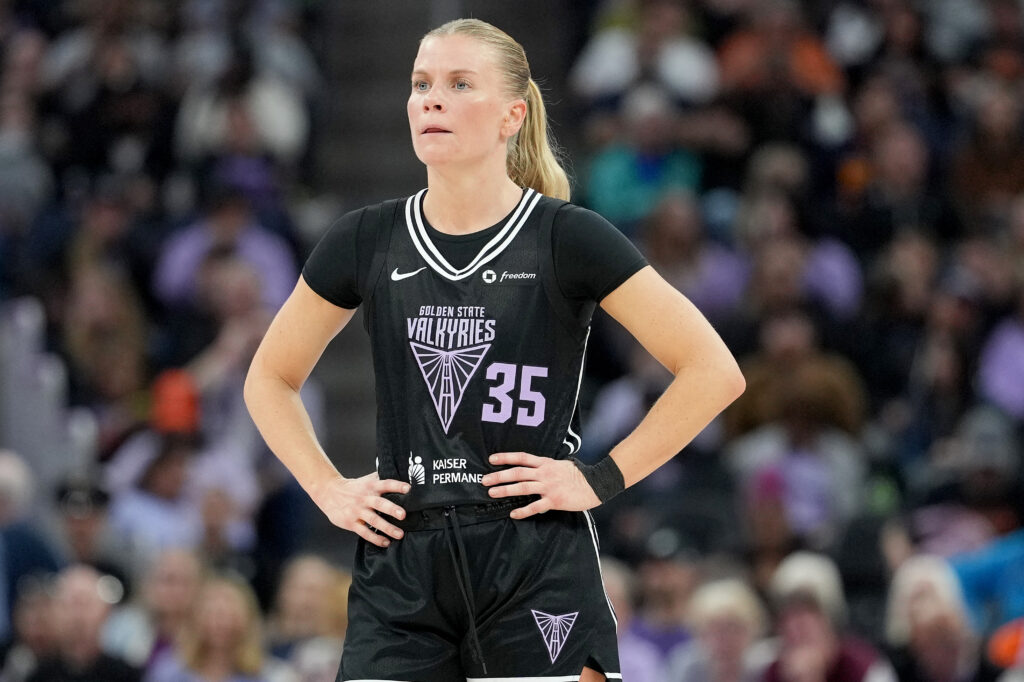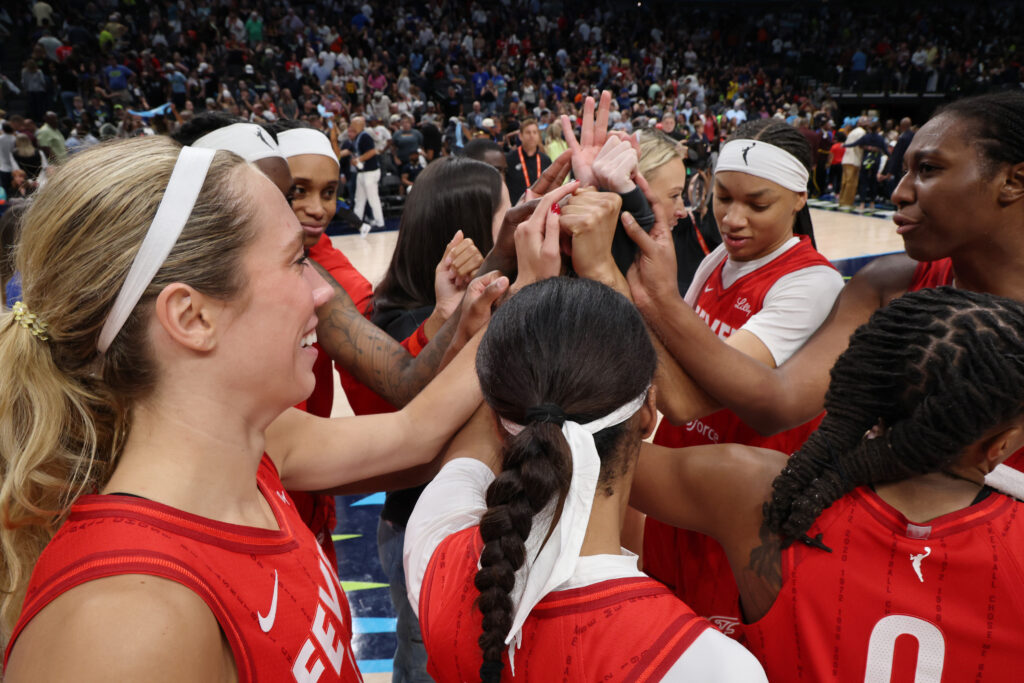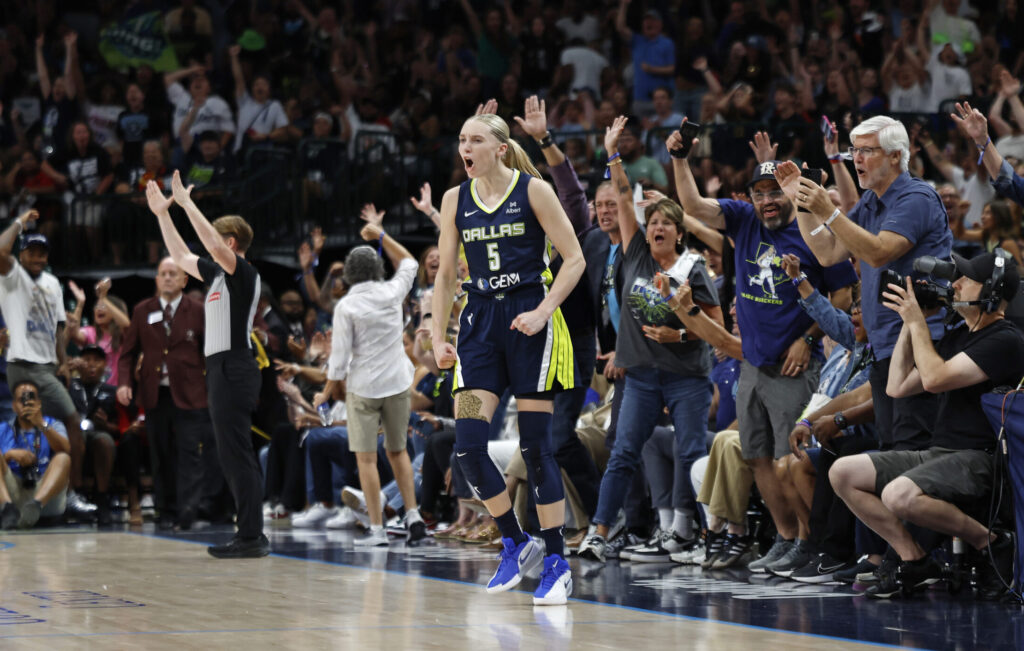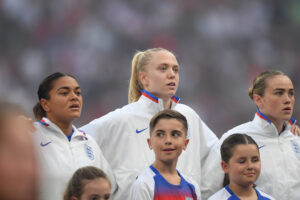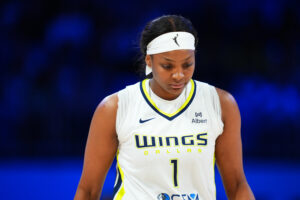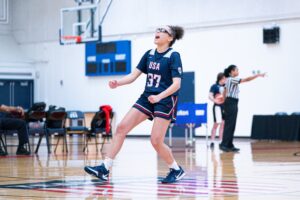
By Jacob Richman and Alexandra Gopin
Title IX was designed in part to balance the scales for girls and boys in school-based athletics. Some day, maybe it will.
But nearly 50 years after Congress passed the sweeping law that guarantees equity in “any education program or activity receiving Federal financial assistance,” including high school athletics, girls are stuck in an imperfect system that continues to favor boys in many ways.
Girls’ participation in school sports has increased dramatically since 1972. But Title IX advocates say that boys still get better treatment. Often, they say, boys teams are provided nicer uniforms, play on better fields, are led by more experienced coaches, have their practices scheduled at more desirable times (relegating girls teams to early mornings and late nights), play with newer equipment and dress in better-equipped locker rooms. All are potential violations of Title IX.
“We still estimate that the majority of schools are likely out of compliance with the law,” said Sarah Axelson, vice president of advocacy at the Women’s Sports Foundation.
When girls see that they’re getting worse treatment, their options include challenging their coach or principal, filing a lawsuit and lodging a complaint with the U.S. Department of Education — all daunting for a teenager. When parents step forward to report these situations, they’re often at the center of disputes that can roil their child’s high school. Not surprisingly, only a small percentage of likely violations end up being reported.
A four-month investigation by The Shirley Povich Center for Sports Journalism and the Howard Center for Investigative Journalism at the University of Maryland raises serious questions about the effectiveness of Title IX in the 23,882 public high schools across the U.S. It raises concerns about how many of the 3.4 million girls playing high school sports have experienced violations of Title IX that went unaddressed.
Among the findings:
- Title IX isn’t aggressively policed by state or federal government officials. It’s mostly up to teenagers and their parents to report violations.
- Most parents and students aren’t well informed about the law. The federal government doesn’t require schools to offer education about Title IX and athletics.
- Reporting Title IX violations often means standing up to school officials like coaches and principals. That’s a lot to ask of high school students and their parents.
- Title IX enforcement protocols are cumbersome and slow-moving. A review of 39 complaints to the Department of Education’s Office for Civil Rights by the Povich and Howard centers showed that the average time from filing to resolution was nearly two years. That means girls who suffered unequal treatment often graduated before they saw results.
Violations reach girls across the country:
- In Union City, New Jersey, a highly publicized athletics field that sits on the roof of a $180 million high school building was mostly used by boys teams. For nearly 10 years, access for girls was limited.
- In Ewa Beach, Hawaii, girls on the water polo team argued that they had to practice on dry land or in the open ocean before their season because they couldn’t get funding for a pool.
- In Ventura, California, girls on the softball team suffered injuries on a field that was poorly maintained, while the boys baseball team had a field that was better tended at a higher quality stadium.
“Most of these athletes just presume that there must be a reason that they’re getting second-class treatment,” three-time Olympic gold medalist Nancy Hogshead-Makar said. “It’s everywhere they look. They see that men are getting more than women everywhere. In high school, in junior high school, in college, men are getting more.”
There’s no doubt that Title IX has had a positive impact on girls and opportunities for them to play sports. Consider Title IX’s impact on participation in high school sports. During the 1971-72 school year, girls made up about 7% of high school athletes in the country. For every girl playing on a high school team, there were more than 12 boys.
Most of these athletes just presume that there must be a reason that they’re getting second-class treatment. It’s everywhere they look.
Through the years, the participation gap steadily has narrowed. In a National Federation of State High School Associations survey of athletics participation in the 2018-19 school year, girls accounted for almost 43% of all high school players.
But the promise of Title IX has yet to be achieved.
Education is lacking
The greatest challenge may be education. Teenagers and their parents first have to understand the law before they challenge school authorities.
Interviews with dozens of parents and their children across the country by the Povich Center and Howard Center revealed a range of understanding of Title IX. Many high school athletes and their parents don’t know that the law exists. Others said they’d heard of the law but didn’t know that protections applied to them.
In the late 1970s, Ellen Zavian — the first female agent licensed by the National Football League Players Association and a Title IX advocate — wanted to play soccer in high school. But she was told she wouldn’t be able to because there was only a boys team.
So Zavian ran track, played volleyball and cheered.
“If I had known about Title IX, I definitely would have filed a suit against my school when I didn’t have the opportunity to play soccer,” Zavian said. “But, I didn’t know about it.”
That information gap still exists. Grace Saad, a former softball player at Buena High School in Ventura, California, didn’t realize she could do anything when her teammates threw around the term “Title IX” after noticing a clear disparity in how they were treated compared to their counterparts on the baseball team.
I knew that things weren’t equal, but I just thought that’s the way it was.
While the Buena High baseball team has a stadium, dugouts and a permanent outfield fence with a scoreboard, the softball team often didn’t have enough softballs to hold batting and fielding practice at the same time.
“I knew that things weren’t equal, but I just thought that’s the way it was,” said Saad, who graduated in 2020.
Courses and webinars in public schools could help inform students, coaches and administrators. But a federal education mandate like the one for parts of Title IX that refer to sexual assault doesn’t apply to sports.
Difficult choices for student, parents
At the beginning, someone notices a problem. It might fit into one of the two baskets of Title IX compliance — “participation” or “treatment and benefits.”
Participation applies to opportunities for girls to play sports as compared to the percentage of girls in a given high school, the proportionality test. If 60% of students in a high school are girls, approximately 60% of athletic opportunities should be for girls, according to Title IX.
Treatment and benefits refers to where girls play and what they play with, among other things. Title IX doesn’t mandate that boys and girls teams have exactly the same of everything. It does require that they receive equal treatment in locker rooms, practice and game venues, scheduling of games and practices, publicity and coaching experience.
At Pentucket Regional High School in West Newbury, Massachusetts, the issue was Twitter. When the school tweeted live updates from its athletics account, 60% focused on boys teams compared to only 32% for girls teams. The Office of Civil Rights determined that the school would be required to monitor publicity efforts to ensure that any inequalities are corrected.
A person with a concern about any of these issues can report them to their high school. A meeting with a principal or athletics director might quickly settle the issue.
When diplomacy fails, there are options in the courts and with the Office for Civil Rights.
Under Title IX, the the office investigates complaints about sexual violence, treatment of pregnant students and treatment of LGBTQ students, as well as school-based sex discrimination in sports. When a person files a complaint, investigators contact the school, check out allegations and decide if violations have occurred. If they have, the civil rights office issues a resolution letter with steps the school must take to come into compliance.
A Title IX lawsuit can be costly and time-consuming. Plaintiffs, even when they prevail, often emerge feeling bruised and exhausted.
In Stillwater, Oklahoma, a group of softball parents filed a Title IX lawsuit against the local school district in August 2020. Ten months later, the parties reached a settlement that addressed many of the parents’ concerns.
“It’s been quite an emotional toll. I think we’ve all lost sleep over it,” said Angela Morgan, a plaintiff in the case and president of the softball team booster club at Stillwater High School.
Eliminating sex discrimination
Title IX is rooted in the turbulent years of the 1950s and 1960s and the passions that fueled the civil rights movement. In those years, Congress debated laws designed to end racial discrimination in public accommodations, outlawing discrimination in hotels and at lunch counters. Later, its powers were expanded to end discrimination in hiring when companies received government contracts.
Title IX’s purpose was to eliminate sex discrimination in education. “No person in the United States shall, on the basis of sex, be excluded from participation in, be denied the benefits of, or be subjected to discrimination under any education program or activity receiving Federal financial assistance,” Title IX states.
At the time, few lawmakers thought about the effect it might have on sports. The subject of sports came up only once during the Senate’s months-long debate of the legislation — and that was no more than a passing exchange. Sen. Birch Bayh, a Democrat from Indiana and the bill’s sponsor, told one of his Senate colleagues: “I do not read [Title IX] as requiring integration … of the football fields,” as recounted by author Welch Suggs in “A Place on the Team: The Triumph and Tragedy of Title IX.”
Despite the profound impact the statute has had on girls and women in sports, those original 37 words included no references to athletics.
Nearly 50 years later, Title IX and opportunity for girls in sports are nearly synonymous. The gains made by high school girls over the decades have been significant, but boys often still get better treatment.
When the state-of-the-art, rooftop athletics field was unveiled in 2009 in Union City, New Jersey, it quickly gained national attention for its innovative design. The boys football team played on it for nearly a decade; use by girls teams was restricted.
The National Women’s Law Center pointed out the problem to Union City High School, and the administration made changes.
Today, girls teams share the field with boys, using it extensively for their practices and games. In fact, Union City High School is in many ways a model for gender equity in sports.
It’s a reminder that Title IX can be monitored and aggressively enforced. But for 50 years it hasn’t been.
The Shirley Povich Center for Sports Journalism and the Howard Center for Investigative Journalism collaborated on a four-month investigation into Title IX and high school sports. Support their work at the University of Maryland’s Philip Merrill College of Journalism.
